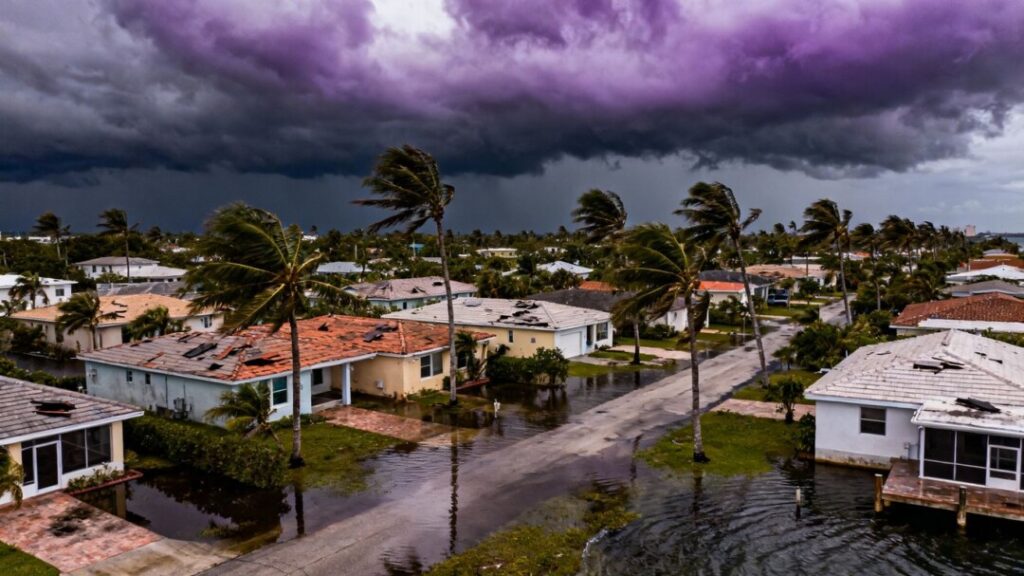Miami-Dade’s real estate market, long a pillar of Florida’s economy, is facing a perfect storm of financial and environmental challenges. Homeowners and local officials grapple with volatile property taxes, surging insurance premiums, and growing concerns about the region’s future in the face of climate threats.
Key Takeaways
- Local calls mount for tax relief as property values steady.
- Soaring insurance premiums outpace the national average, ranking Miami-Dade among the highest in the U.S.
- Debate grows over eliminating property taxes but concerns persist about impacts on essential services.
- Affordability crisis deepens, pushing homeownership out of reach for many residents.
Calls to Reconsider Property Taxes
After years of double-digit growth, Miami-Dade’s property values are stabilizing, with the latest reports showing slower gains. This has prompted the county’s property appraiser to urge municipalities to reconsider current tax rates, emphasizing relief for homeowners—particularly those in hard-hit condo communities. While some commissioners support bold ideas like eliminating property taxes for primary residences, such changes would require state constitutional amendments and provoke heated debates about funding essential services like schools and emergency responders.
A recent study highlights just what’s at stake: ad valorem taxes fund a major portion of local budgets—about three-quarters in some communities. Eliminating these taxes could save homeowners thousands each year, but would force government to find billions elsewhere, likely through higher sales taxes or deep budget cuts.
Insurance Crisis Hits Wallets
Florida’s insurance woes are now notorious nationwide. Miami-Dade residents pay an average annual premium that’s second only to Monroe County (the Keys), with costs more than 70% higher than the U.S. average. Since 2018, premiums have climbed over 40%, with the typical single-family homeowner in Miami-Dade now facing bills above $5,000 annually.
These rising costs are attributed to a perfect mix of hurricane risk, expensive real estate, and tightening regulations. While some legislative efforts aim to stabilize the insurance market, rates remain sky-high for those living in coastal zones.
Affordability and the Shrinking Middle Class
Housing affordability in Miami-Dade continues to deteriorate. Recent data shows the monthly gap between renting and owning a single-family home has jumped to over $2,000, up dramatically from just a few years ago. Only a fraction of homes for sale are considered affordable by local standards, while rising costs of homeownership—including taxes and insurance—keep more residents stuck in the rental market.
Experts note that homeownership is still the strongest route to long-term financial security and community stability. However, with surging living expenses and limited options, the dream of owning a home is slipping further out of reach for many Miamians.
The Uncertain Road Ahead
Debates about how best to reform Miami-Dade’s tax and insurance systems are likely to intensify in the months ahead. While homeowners hope for relief, policymakers must contend with the challenge of balancing fiscal responsibility with affordability and resiliency in the face of climate risks. The path forward will shape not only real estate values but the future livability and sustainability of South Florida itself.
Further Reading
- Miami-Dade property appraiser urges local governments to lower taxes as market stabilizes, CBS News.
- Florida property tax debate: what elimination could mean for your Miami-Dade County & Key Biscayne bills
| Real Estate, IslanderNews.com. - Miami-Dade Commissioner floats idea of abolishing property taxes | Real Estate, IslanderNews.com.
- Miami homeownership vs renting: Which costs more in 2025?, Miami Herald.
- Florida’s insurance crisis: Premiums up 43% since 2018, Miami-Dade ranks second highest, IslanderNews.com.


